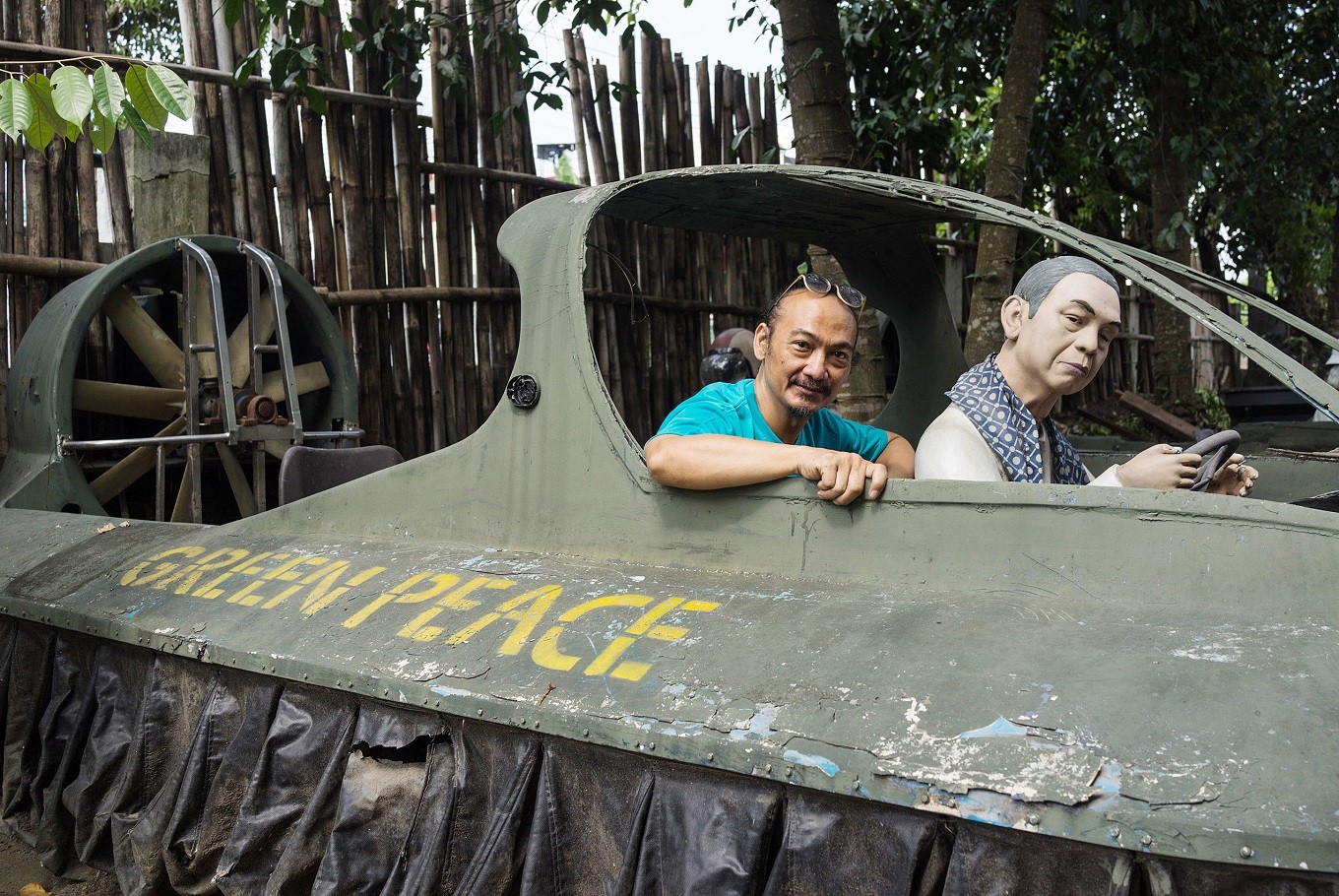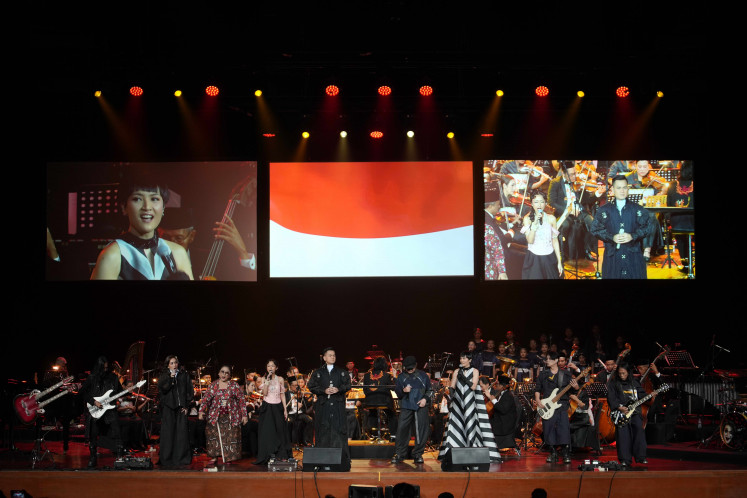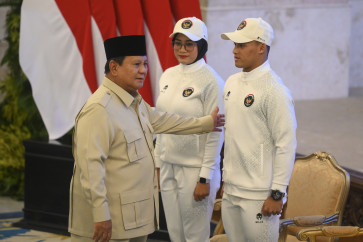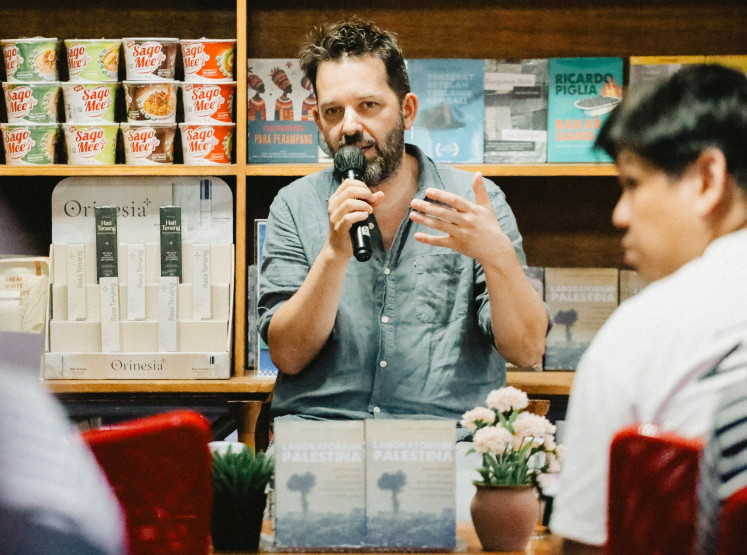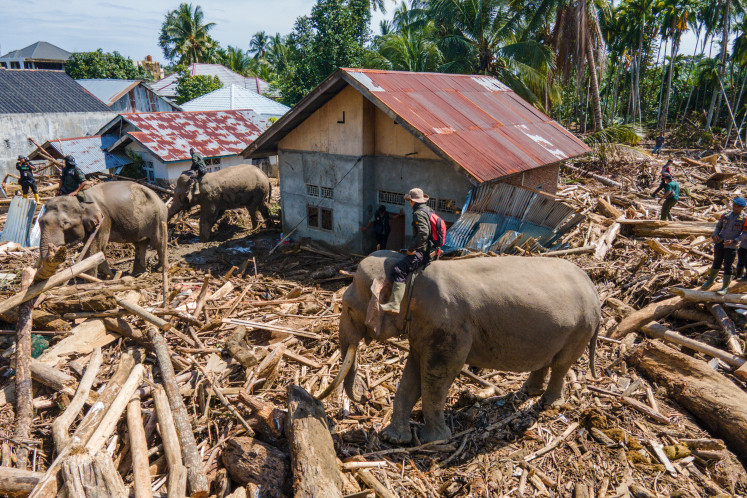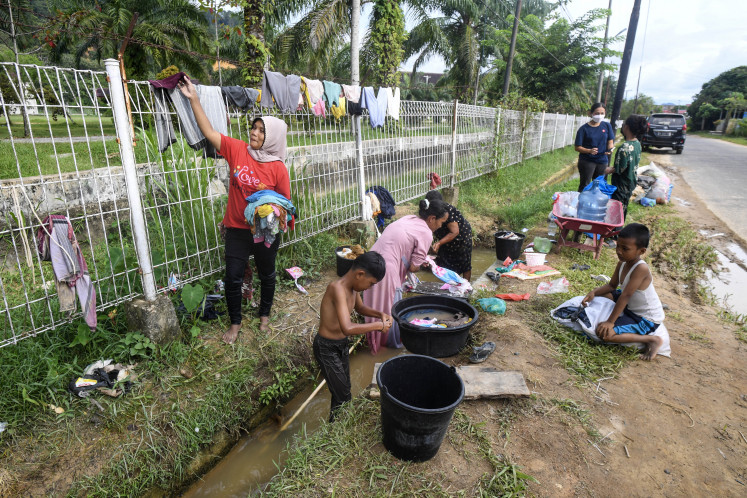Popular Reads
Top Results
Can't find what you're looking for?
View all search resultsPopular Reads
Top Results
Can't find what you're looking for?
View all search resultsThe Secret Code of Heri Dono: A visual art journey
Heri Dono’s diverse visual artworks, which have been shown worldwide in the last 10 years, are available for public viewing at his Kalahan Studio in Sleman, Yogyakarta.
Change text size
Gift Premium Articles
to Anyone
Dubbed The Secret Code of Heri Dono, the public exhibition runs until July 7.
“This is an open house for friends and visitors who want to see my studio,” said Heri, who was born in Jakarta in 1960.
The studio is a Dutch colonial house occupied by Heri since 2001 and has become a spacious display room expected to function as a “museum of discourse”, presenting ideas and archives to be explored by art enthusiasts.
Heri’s artworks, some of which have been shown elsewhere in Indonesia, remain topical.
The artist began his career by experimenting with a combination of Java’s wayang (shadow puppet) theater with elements of visual art, music, storytelling, mythology, philosophy, social criticism and humor.
His works can therefore be humorous, absurd and satirical at the same time.
Heri’s Fermentation of Nose, for instance, places long-nosed head statues on classroom tables. It portrays a classroom with robot-like students reacting in a uniform and conformist manner to information provided by modern technology. This symbolizes how young people nowadays often believe the latest information from the virtual world in blind faith and without verification.
Another of Heri’s works critical of modern technology is called A Contemplation. Produced in 2011, this work features a dog-headed humanoid sculpture lying down while watching television. The fiberglass object conveys the idea that television reports direct the public to find abnormal things normal.
In Three Dinosaurs, produced in 2013, Heri shows dinosaur-headed humanoid figures that look both frightening and laughable. He created this work as a parody of The Three Musketeers by Alexandre Dumas. It claims that the human cell contains the DNA of dinosaurs, as reflected in the constant war, violence and colonization throughout the history of civilization.
Read also: Bantul's rustic pottery in demand in Europe
Other works of Heri’s feature wild deformations and free fantasies that are based on wayang, children’s cartoons, animation films and comics.
Heri’s strength in infusing wayang into some of his creative objects made him the only Indonesian contemporary visual artist to be invited to the 50th Venice Biennale in 2003.
He has also participated in more than 270 art exhibitions, including 31 international biennales, and received various world awards and invitations.
Among the events were Guangzhou Triennial ( 2011 ), Gwangju Biennale (2006 and 1995), Sharjah Biennial ( 2005 ), Taipei Biennial ( 2004 ), Venice Biennale ( 2003 ), Asia Pacific Triennial (2002 and 1993), Yokohama Triennial ( 2001 ), Havana Biennial ( 2000 ), Shanghai Biennale ( 2000 ), Sydney Biennale ( 1996 ) and São Paolo Art Biennial (2004 and 1996). The awards bestowed on him were the Prince Claus Award for Culture and Development ( 1998 ), the UNESCO Prize for Education Art in 2000 and the Adhikarya Rupa (Art Award) from the Indonesian government in 2014.
“Not all my works [from previous exhibitions] are displayed at this one, because many of them are still abroad,” Heri said.

